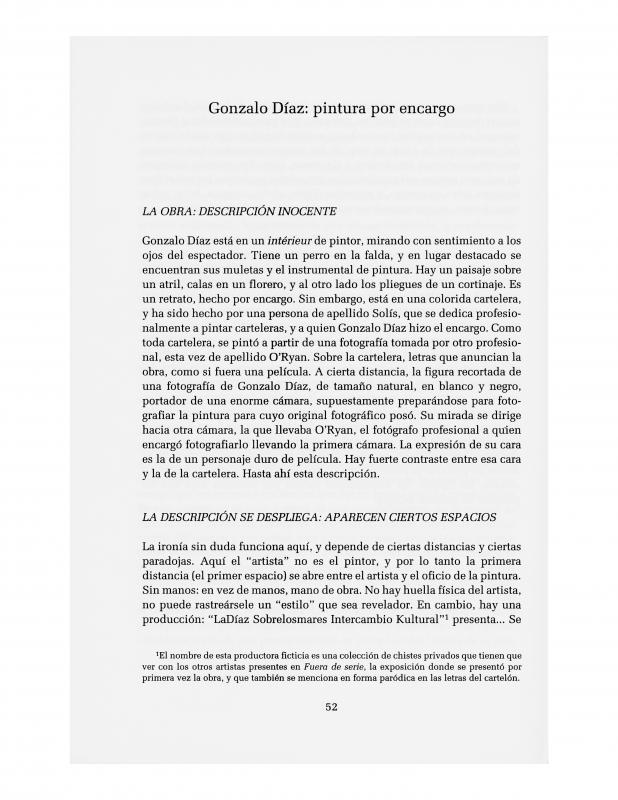Gonzalo Díaz (b. 1947) is a Chilean artist who specializes in painting and installations. He studied at the Escuela de Bellas Artes, where he trained under José Balmes and Adolfo Couve. Many of his works are caustic commentaries on the visual arts, as in his Pintura por encargo (Painting Made to Order) [see the ICAA Digital Archive (doc. no. 744852)], and he often resorts to irony and visual experimentation. He positioned himself midway between painting and Conceptual art as a key figure, part of a new critical approach to painting that flourished in the 1980s in Chile. During that period he produced works such as Los hijos de la dicha (The Children of Happiness, 1979) and Historia sentimental de la pintura chilena (A Sentimental History of Chilean Painting, 1982), in which he questioned and, mainly, parodied the country’s received pictorial legacy. He later moved on to work on installations, addressing historical and cultural themes and different forms of representation and inclusion in exhibition spaces.
In Historia sentimental de la pintura chilena Díaz raids the vaults of Chilean collective memory, appropriating objects such as the woman featured on packets of Klenzo cleaning products and the tango “Mano a Mano” by Celedonio Flores. This work represents a revitalization of the Chilean painting experience and a rejection of the avant-garde rhetoric of the 1980s, which turned away from painting to embrace performance art, photography, and video, among others.

